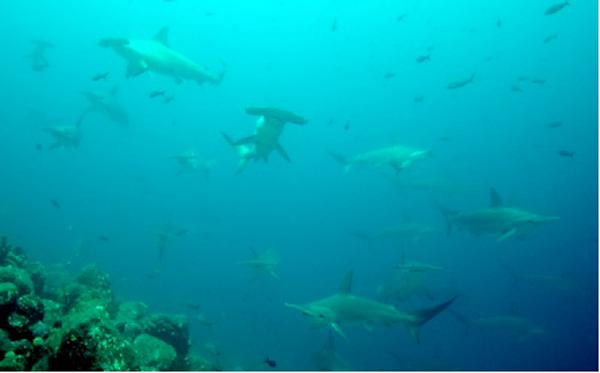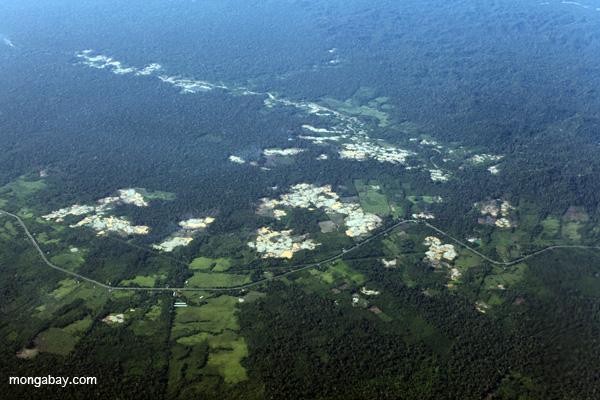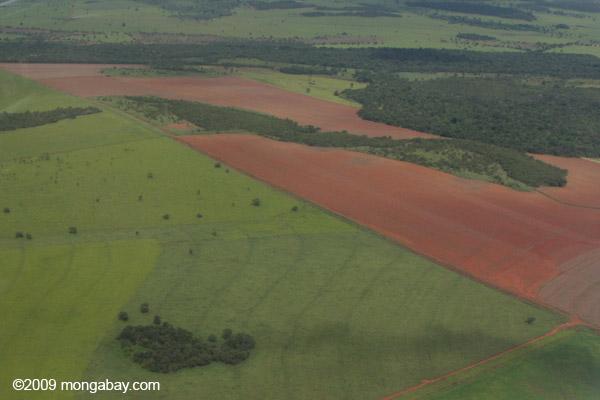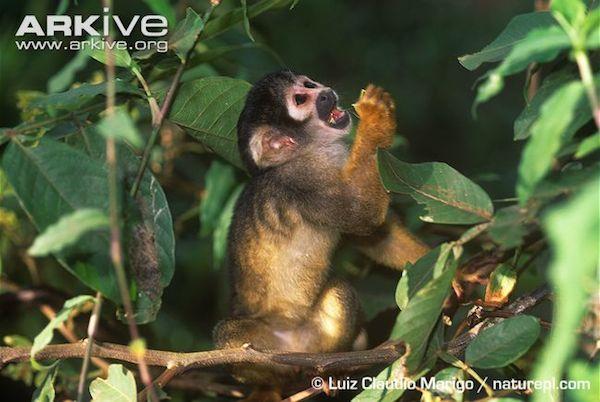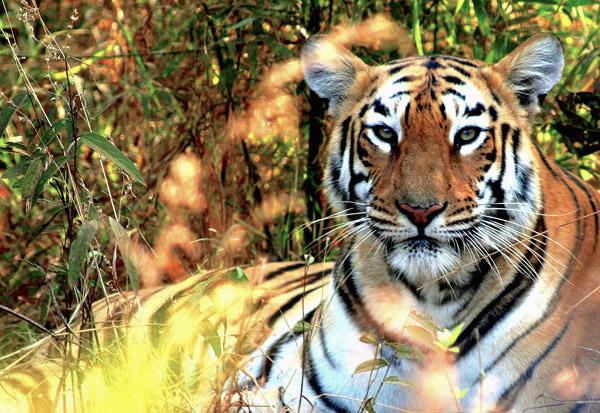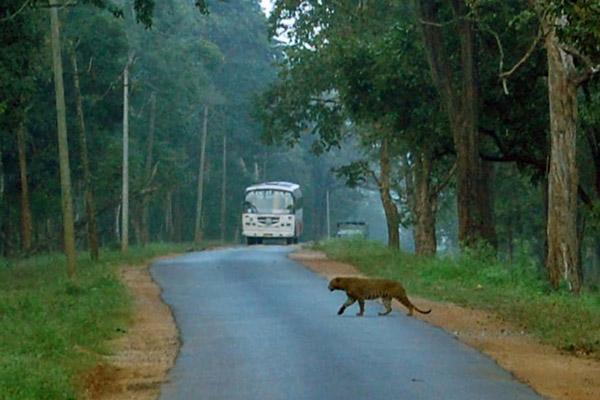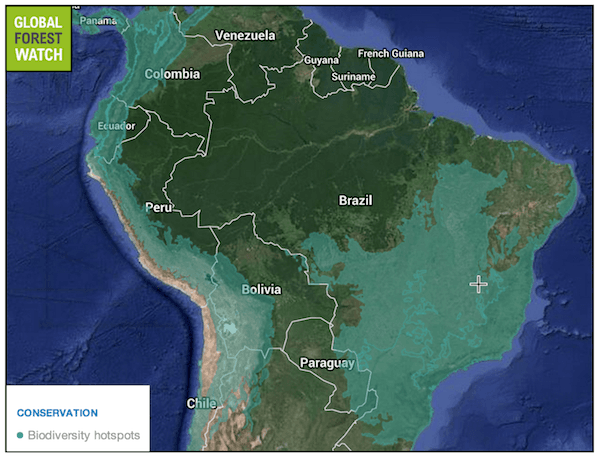Mrinalini Erkenswick Watsa
Author
CONTACT ME
Website: news.mongabay.com
LATEST
Peru’s Primary Forests Crisscrossed With Illegal Roads
Roads spread out like multi-fingered tendrils, eating into the surrounding forests of Cordillera Azul National Park, in the Department of Loreto in Peru.
|
Shark Fin Shipment by American Airlines Ended
On December 24, an American Airlines plane carried 411 kilos (904 pounds) of dried hammerhead shark fins from Alajuela, Costa Rica, to Hong Kong, touching down partway through the journey in Miami.
|
Peru Expanding Highways Into Rainforest Lands
It was 2009 when I first laid eyes on the 2,500 kilometer-long Interoceanic Highway that connects the west coast of Peru with the western Brazilian border - bisecting the entirety of the Peruvian Amazon.
|
Endangered Forests Shrink as Demand for Soy Rises
Sitting down at my favorite restaurant I decide to order a stir-fry loaded up with fresh vegetables and noodles. Choosing the more eco-friendly route, I opt for soy in my food, rather than an animal-based protein. I feel pretty good about how healthy I’m being, but I know I could do better. I scour the menu for some idea of where my food is coming from, and finally end up asking the waiter. He immediately gets flustered and contacts his manager, while I try in vain to assure him that I’m merely curious and not really being critical of the restaurant or his service in any way.
|
One Subspecies of Squirrel Monkeys In Danger of Extinction
Walking through the Amazon rainforest for the first time is an overwhelming experience, and not in an entirely predictable way. With its incredible biodiversity, several orders of magnitude higher than forests in temperate zones, you can be forgiven for expecting to be surrounded by wildlife vying for your attention, from the small mammals on the forest floor to the hundreds of birds in the dappled canopy.
|
Kenya--Shrinking Protected Areas (Part IV)
Over the last century, 91.7 percent of all changes to protected areas in Kenya have involved reductions in their area, known as downsizing, which is an unusual and remarkable statistic from a global perspective
|
Tigers vs. India Reserves (PART II)
In India’s central state of Madhya Pradesh lie 500 square kilometers (200 square miles) of protected land demarcated as the Panna Tiger Reserve. The Reserve has the dubious distinction of becoming entirely bereft of Bengal tigers (Panthera tigris tigris) in 2009, seemingly without anyone noticing, and then subsequently hosting a remarkably successful tiger reintroduction program.
|
Polar Bears Threatened in Arctic By Greenhouse Gases
Polar bears exist only in the Northern Hemisphere, preferring to live on the edges of great stands of sea ice, where the water is shallow and their favorite prey, the ringed seal (Phoca hispida), can be consumed. In the winter as the ice grows, they migrate with it, as much as 1,000 kilometers to stay with the southern edge of the pack ice. Thus seasonal melting and freezing of the ice has a significant impact on their ability to feed, and ultimately, their survival.
|
Meet the Newest Enemy to India’s Wildlife
According to the slowly expanding field of road ecology, which focuses on the effects of roads on wildlife, road kill inevitably accompanies roads—and is no longer restricted to domestic animals alone.
|
Peruvian Deforestation- A Paradise Lost
In 1988, when British environmentalist Norman Myers first described the concept of a “biodiversity hotspot” - an area with at least 0.5 percent or 1,500 endemic plants that has lost 70 percent of its primary vegetation - he could have been painting a picture of the highly threatened Peruvian Andes mountain range.
|
Peru’s Primary Forests Crisscrossed With Illegal Roads
Roads spread out like multi-fingered tendrils, eating into the surrounding forests of Cordillera Azul National Park, in the Department of Loreto in Peru.
|
Shark Fin Shipment by American Airlines Ended
On December 24, an American Airlines plane carried 411 kilos (904 pounds) of dried hammerhead shark fins from Alajuela, Costa Rica, to Hong Kong, touching down partway through the journey in Miami.
|
Peru Expanding Highways Into Rainforest Lands
It was 2009 when I first laid eyes on the 2,500 kilometer-long Interoceanic Highway that connects the west coast of Peru with the western Brazilian border - bisecting the entirety of the Peruvian Amazon.
|
Endangered Forests Shrink as Demand for Soy Rises
Sitting down at my favorite restaurant I decide to order a stir-fry loaded up with fresh vegetables and noodles. Choosing the more eco-friendly route, I opt for soy in my food, rather than an animal-based protein. I feel pretty good about how healthy I’m being, but I know I could do better. I scour the menu for some idea of where my food is coming from, and finally end up asking the waiter. He immediately gets flustered and contacts his manager, while I try in vain to assure him that I’m merely curious and not really being critical of the restaurant or his service in any way.
|
One Subspecies of Squirrel Monkeys In Danger of Extinction
Walking through the Amazon rainforest for the first time is an overwhelming experience, and not in an entirely predictable way. With its incredible biodiversity, several orders of magnitude higher than forests in temperate zones, you can be forgiven for expecting to be surrounded by wildlife vying for your attention, from the small mammals on the forest floor to the hundreds of birds in the dappled canopy.
|
Kenya--Shrinking Protected Areas (Part IV)
Over the last century, 91.7 percent of all changes to protected areas in Kenya have involved reductions in their area, known as downsizing, which is an unusual and remarkable statistic from a global perspective
|
Tigers vs. India Reserves (PART II)
In India’s central state of Madhya Pradesh lie 500 square kilometers (200 square miles) of protected land demarcated as the Panna Tiger Reserve. The Reserve has the dubious distinction of becoming entirely bereft of Bengal tigers (Panthera tigris tigris) in 2009, seemingly without anyone noticing, and then subsequently hosting a remarkably successful tiger reintroduction program.
|
Polar Bears Threatened in Arctic By Greenhouse Gases
Polar bears exist only in the Northern Hemisphere, preferring to live on the edges of great stands of sea ice, where the water is shallow and their favorite prey, the ringed seal (Phoca hispida), can be consumed. In the winter as the ice grows, they migrate with it, as much as 1,000 kilometers to stay with the southern edge of the pack ice. Thus seasonal melting and freezing of the ice has a significant impact on their ability to feed, and ultimately, their survival.
|
Meet the Newest Enemy to India’s Wildlife
According to the slowly expanding field of road ecology, which focuses on the effects of roads on wildlife, road kill inevitably accompanies roads—and is no longer restricted to domestic animals alone.
|
Peruvian Deforestation- A Paradise Lost
In 1988, when British environmentalist Norman Myers first described the concept of a “biodiversity hotspot” - an area with at least 0.5 percent or 1,500 endemic plants that has lost 70 percent of its primary vegetation - he could have been painting a picture of the highly threatened Peruvian Andes mountain range.
|


